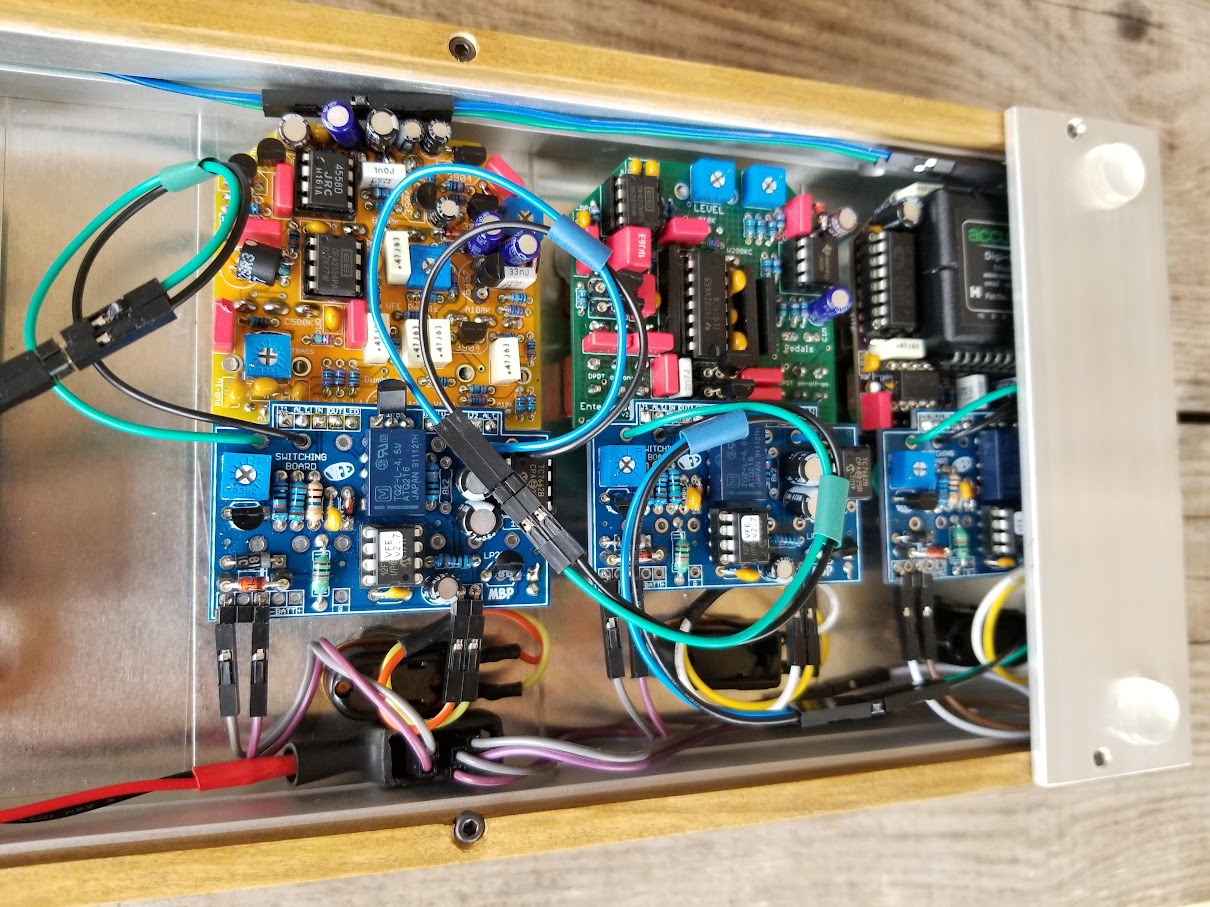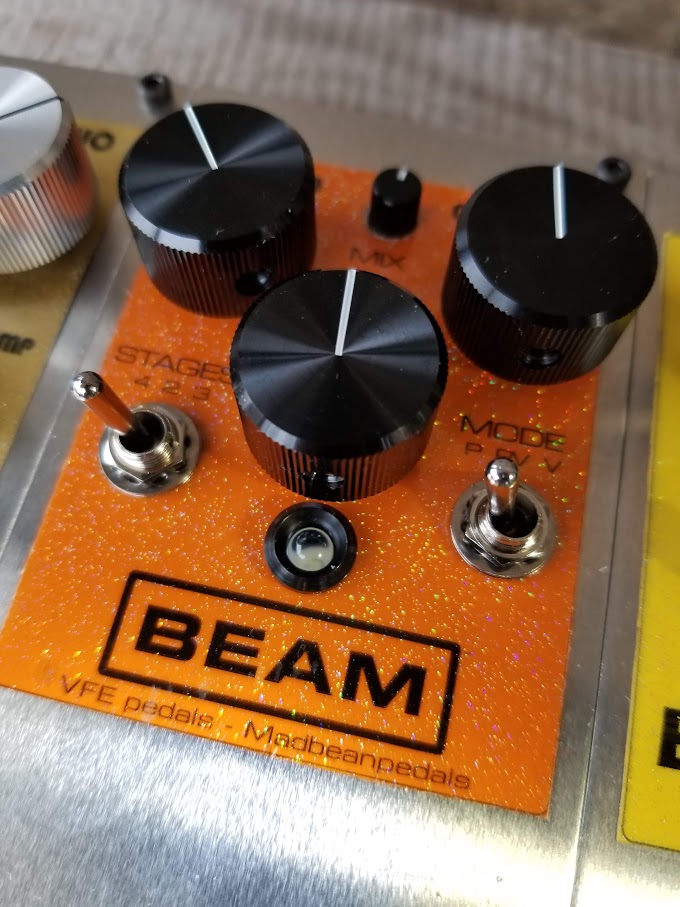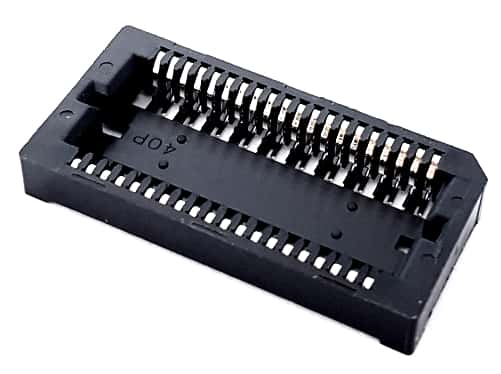This is an experimental prototype Eurorack floor case with single pedals converted to modules.
It uses Vector TS169 rails with Schroff 2.5mm threaded nut rail inserts.
The case is 84HP wide and 3U high.
The panels are 12 HP each. (5.1X2.4")
The filler and IO panel are 6 HP. (5.1X1.2")
The panels are custom cut 0.09" thick 6061 aluminum sheet from onlinemetals.com.
The sides are aluminum angle from the local hardware store and cut to length on a chop saw.
The wood strips on the front and back are poplar that have been tinted with a stain pen.
The wiring is mostly using 2.5mm Crimp connectors. (Tayda SKUs A-1060, A-1062)
The 3 faceplates on the right (TS, AD, FRH) are printable inkjet stickers on top, and color adhesive vinyl on bottom of a .03" clear plastic sheet.
The 3 faceplates on the left are inkjet transparencies printed in reverse, glitter sprayed, and then color sprayed on the print side. I also added a layer of removable sticky stuff to keep them laid down. These 3 faceplates are actually washable. The faceplates were originally made this size so that the faceplate and internal circuit could be transferred to different double and triple pedal enclosure sizes if desired.
It is powered via the P3 system (Phantom Pedal Power) which sends 9v power over the ring, audio on the tip, and a shared ground on a regular TRS stereo cable. (You can probably make an adapter to do this with a OneSpot, I just haven't tried it yet)
Modules pictured in the case are:
MB/VFE The Scream
MB/VFE Alpha Dog
MB/VFE Fiery Red Horse
MB/VFE Bumblebee
MB/VFE Tractor Beam
MB/VFE Yodeler
Other Modules:
MB/VFE Choral Reef
MB/VFE Old School
MB/VFE White Horse
BYOC Overdrive II















It uses Vector TS169 rails with Schroff 2.5mm threaded nut rail inserts.
The case is 84HP wide and 3U high.
The panels are 12 HP each. (5.1X2.4")
The filler and IO panel are 6 HP. (5.1X1.2")
The panels are custom cut 0.09" thick 6061 aluminum sheet from onlinemetals.com.
The sides are aluminum angle from the local hardware store and cut to length on a chop saw.
The wood strips on the front and back are poplar that have been tinted with a stain pen.
The wiring is mostly using 2.5mm Crimp connectors. (Tayda SKUs A-1060, A-1062)
The 3 faceplates on the right (TS, AD, FRH) are printable inkjet stickers on top, and color adhesive vinyl on bottom of a .03" clear plastic sheet.
The 3 faceplates on the left are inkjet transparencies printed in reverse, glitter sprayed, and then color sprayed on the print side. I also added a layer of removable sticky stuff to keep them laid down. These 3 faceplates are actually washable. The faceplates were originally made this size so that the faceplate and internal circuit could be transferred to different double and triple pedal enclosure sizes if desired.
It is powered via the P3 system (Phantom Pedal Power) which sends 9v power over the ring, audio on the tip, and a shared ground on a regular TRS stereo cable. (You can probably make an adapter to do this with a OneSpot, I just haven't tried it yet)
Modules pictured in the case are:
MB/VFE The Scream
MB/VFE Alpha Dog
MB/VFE Fiery Red Horse
MB/VFE Bumblebee
MB/VFE Tractor Beam
MB/VFE Yodeler
Other Modules:
MB/VFE Choral Reef
MB/VFE Old School
MB/VFE White Horse
BYOC Overdrive II

